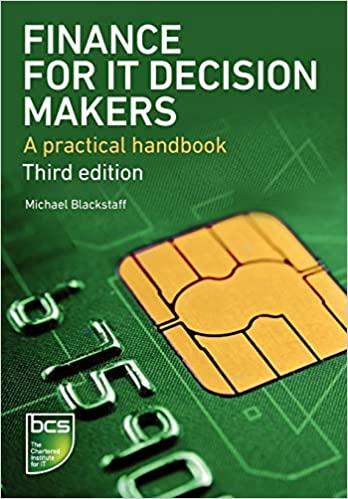Question
Part A A $1,000 par value bond pays interest of $35 each quarter and will mature in 10 years. If an investor's simple annual required
Part A
A $1,000 par value bond pays interest of $35 each quarter and will mature in 10 years. If an investor's simple annual required rate of return is 12 percent with quarterly compounding, how much should the investor be willing to pay for this bond? (Round the answer to two decimal places.)
$1,115.57
$825.49
$941.36
$1391.00
lesser is the chance that the realized return will differ significantly from the expected return
greater is the chance that the realized return will be negative
greater is the chance that the realized return will differ significantly from the expected return
If the expected rate of return on a stock exceeds the required rate, it means that _____
the dividends are not declared.
the stock is a good buy.
the stock is experiencing a supernormal growth.
The company is not trying to maximize the price per share. The market for a stock is said to be in equilibrium when the _____.
expected return on the stock is equal to its historical return
expected return on the stock is equal to the market risk premium
expected return on the stock is equal to the market return
expected return on the stock is equal to its required return
The principal value generally is written on the outside cover of the debt contract, so it is sometimes called the:
premium value.
maturity value
discounted value.
face value.
Step by Step Solution
There are 3 Steps involved in it
Step: 1

Get Instant Access to Expert-Tailored Solutions
See step-by-step solutions with expert insights and AI powered tools for academic success
Step: 2

Step: 3

Ace Your Homework with AI
Get the answers you need in no time with our AI-driven, step-by-step assistance
Get Started


